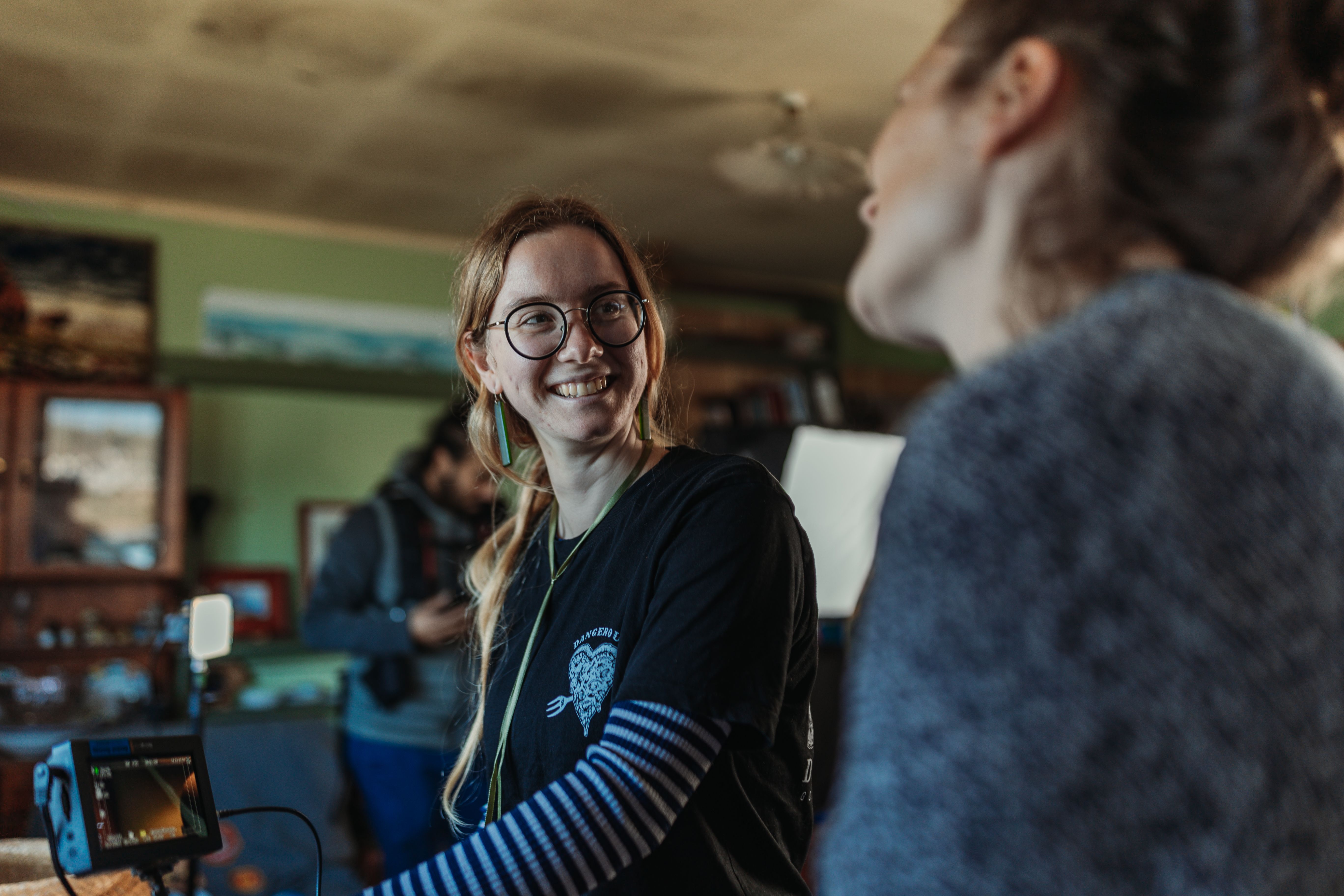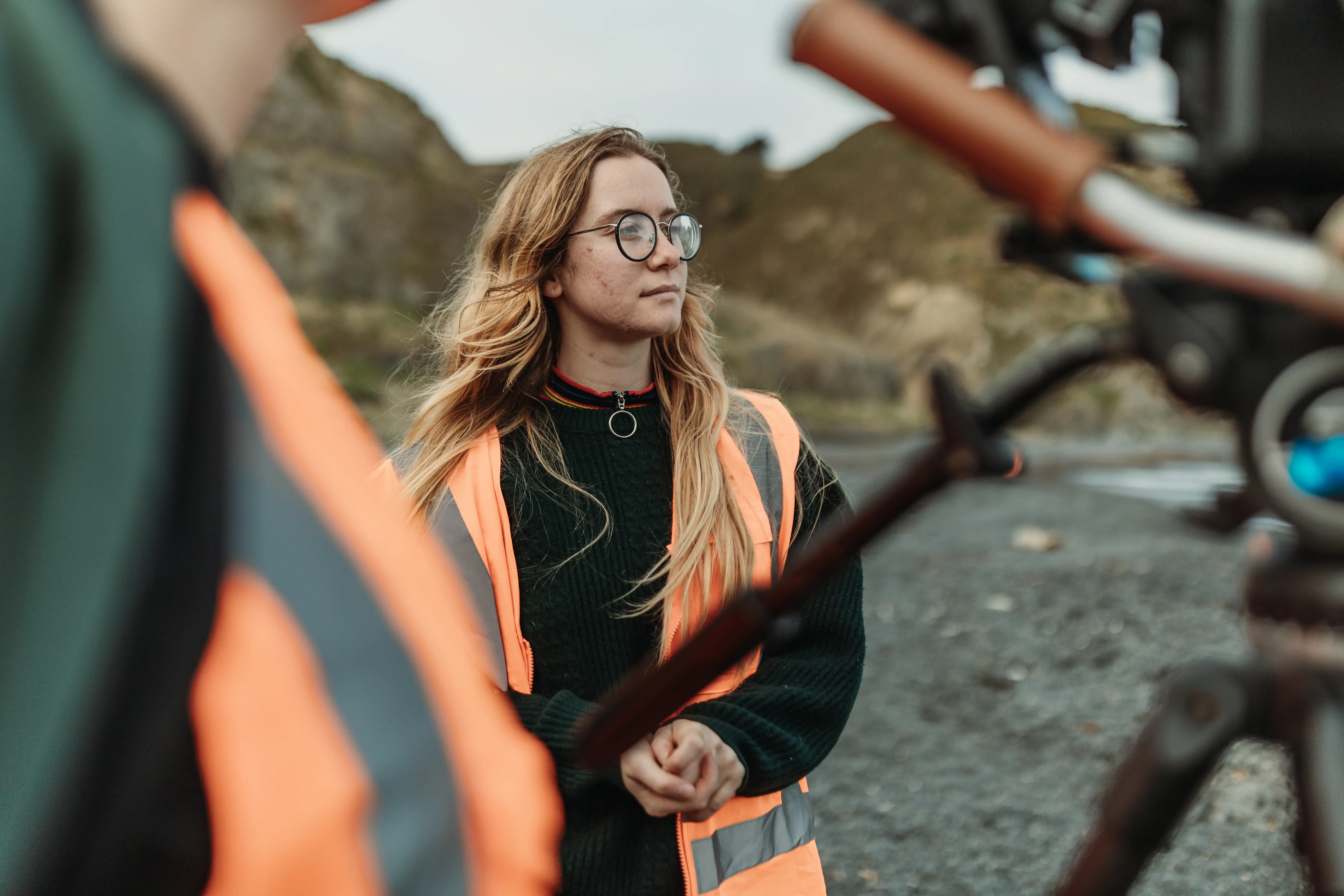Ethics on a Documentary Set
Documentary filmmaking isn’t just about getting the shot — it’s about getting it right. Libby Witheford-Smith shares lessons from making Taurewarewa, urging filmmakers to go beyond consent forms and prioritise ethics, care, and respect for real stories and the people who tell them.
At my 9 to 5 the other day, a small misunderstanding happened. A manager had misunderstood the terms of a consent form we were meant to sign if we were to appear in an in-house video for the company. The inclusion of the phrase “in perpetuity” was being debated. It all sounded very serious. I mean, if it was to be included, the company would have the right to chop and change what we’d said in our interviews and post whatever version they wanted to anywhere on the Internet or advertising media, forevermore...?
Unfortunately, scary phrases like “in perpetuity” are commonplace in documents like release forms or consent forms – they’re the crucial legal document you need to complete any filming, narrative or documentary. Release forms are a way for image rights of the people in the film to be properly obtained by the filmmaker. They’re important as they create a paper trail that demonstrates that the film has been legally made.
“Just because a film which has all its release forms signed is legally made, it doesn’t mean it’s ethically made.”
Once this commonality of the doomsday-sounding phrase “in perpetuity” was made clear to the manager and a new version was made, he apologised to us about having to do the form again. I sympathised with his reaction to the legalese – having made a short documentary in 2024 as part of Day One Shorts, I’d had to come to grips with what consent forms really mean, both as a director and as a documentary subject. It reminded me that even though I thought I was prepared to conduct interviews and sit in the edit room making decisions about cuts and sound effects, when we started the pre-production process I was unaware of a lot of the decisions I would have to make surrounding ethics.
Back to release forms, briefly. Just because a film which has all its release forms signed is legally made, it doesn’t mean it’s ethically made. Informed consent is a crucial concept to understand and implement in documentary practice: this isn’t just about getting the forms signed, but about ensuring each person fully understands and agrees to what they’re signing, and is in an appropriate headspace to sign. Duty of care, the basic concept of doing no harm to those you’re responsible for, is also fundamental to understand. This is at the core of why ethics are important to documentary making in a way that is different from narrative filmmaking, as people’s real lives, stories, or relationships will be the fibres of your film.
“Be confident in what you’re leaving in the film, and also what you’re filming at all.”
Lastly, before embarking on the filmmaking process with your cool new idea for a documentary, it’s also good to clue up on story sovereignty – the concept that those within a community have a right to tell their own stories. Kura Turuwhenua explains it succinctly here.
Also note: the context that informs a lot of my advice is that our film relied upon the recounting of lived experience of people with bipolar disorder. Representing these people as authentically as possible and respecting their boundaries when it came to putting very personal matters on screen was my priority. For your film, your relationships with your subjects, and subject matter, may be completely different.
Finally! Here are 7 things me and Lily Groenhart, the producer of Taurewarewa, did in the making of our short film to ensure we took ethics into account every step of the way.
1. Ask questions after reading the contract: The reason why I had sympathised with my coworker about the consent form confusion was because I had had similar confusion myself over release and consent forms while filming Taurewarewa. Because of the sensitive nature of the interviews used in our mental health documentary, I questioned if we had the right to recall some content of our film later on, if a subject decided they were uncomfortable with what they had said. The answer was: definitely not. Because this wasn’t possible, this renewed my caution around not including anything that any of the subjects might be even a little bit unsure about.
Lesson learned: Be confident in what you’re leaving in the film, and also what you’re filming at all. The subject, or you yourself, may change their mind in the future about including a risky, controversial, or personal topic. The film will be out of your hands once it’s put online or handed over to a post house, with others having access to the material – and then, of course, an audience can see it! So, be absolutely concrete about what you can and can’t put into your film. This might save a lot of mixed feelings in the future.
2. Choose neutral spaces: When planning the film, I didn’t want to go into people’s houses to film their interview. Think of it like that neutral, ‘third space’ that WikiHow might tell you is a good place to have a breakup conversation. This was to ensure there wasn’t any power imbalance in the location – as the subject may feel pressure to host us if it was in their house, for example.
3. Get crew on the same page: On set, we minimised the number of people in the recording room. We already had a small crew, but for example, our BTS photographer/videographer arrived halfway through each shoot day. He stayed outside until we were finished filming the interview. This also served two purposes – a) we thought the content would be more visually engaging when we were capturing B-roll, rather than sitting down and interviewing, and b) we wanted to minimise distraction or anything that would disrupt the immersion created by an interview space where the subject was opening up. These reasons were covered in our health and safety briefing at the top of the day by Lily, so everyone knew to be respectful while filming, and to be aware of additional persons slotting into the team throughout the day.
4. Find a great editor: Finding the right editor was also a crucial part of this process. Because she spent the greatest amount of time with the raw footage, we needed to be on the same page when it came to ethics, and using only the spoken content that subjects were 100% on board with.
5. Get subjects’ feedback as the edits progress: Every cut I got back from the editor, I would watch in full, and forward onto the two other subjects with a note or two, and ask them how they felt about how their story was being represented, or if they wanted it to go in a different direction. I made sure they knew when the very last day was that they could make changes to this (picture lock), so we didn’t get any confusion about magic abilities to take a section out from the finished picture. Checking in with them multiple times and also on the day helped to negate the chances of this happening.
6. Be prepared to hear ‘no’: This feels like a self-explanatory guideline as a continuation of the subjects’ feedback on your edit process. There may be points of contention they have, or boundaries on how they want to be presented. It’s important to respect these expressions of how they’re feeling, and to be prepared to cut and change your perfect edit as a result.
7. Keep the consent conversation going: Once your film launches, it will continue to have a life beyond your control, particularly if it’s part of a greater social impact campaign. Wherever you’re able to, hold conversations with the subjects of your film about marketing strategies, production stills used for posters, and promotional material on film festival websites, and anything else that you’d want to check in with them about. It doesn’t have to be formal – a quick ‘These are two versions of the poster we’re considering, do you mind this version with you on it? It’ll be used on most of our digital marketing and any film festivals we get into will use it in their brochures’ can be a simple way of getting consent to use their image on a very visible scale when marketing the film.

While most release forms will include terms such as “I give the Filmmaker an irrevocable and unlimited right to use my name and all or any part of the recordings [...] in perpetuity [...] including in advertising, promotion and publicity of the Film”, in my opinion it’s nice to still have a rapport in some capacity with the people who you are portraying, in order to show them they are respected. (As with all other tips/opinions in this article, this may or may not apply to your situation and your film’s promotion specifically.)
“It’s now up to you to ensure that behind that end result on the shiny silver screen is a robust set of ethical decisions.”
There we have it – start to finish, some of the ethical considerations and decisions we had to make: sometimes as a team, sometimes just me as a director.
While making factual content, whether semi-scripted or purely candid capture of a subject’s conversations with you, it’s my opinion that good ethical practice needs to be at the front of your mind. The story you’re telling is in fact made up of what already exists, and you have a duty of care to make sure that you’re representing these real people’s stories accurately and with care.
So go forth, put your best foot forward – doco making is uniquely difficult, but so rewarding at the same time. It’s now up to you to ensure that behind that end result on the shiny silver screen is a robust set of ethical decisions.
About Libby Witheford-Smith:
Based in Te Whanganui-ā-Tara (Wellington, New Zealand), Libby Witheford-Smith graduated film school in 2022, having written the student short Old Haunt. This went on to win awards, including Best Next Gen Short at Melbourne Women in Film Festival.
Their next project Taurewarewa, a funded documentary about bipolar, won her Best Māori Filmmaker at the New Zealand Youth Film Festival, the same project also being nominated for Best Directing of a Documentary at the NZ Web Fest.
Currently digitising archive videos for work and writing poetry for play, Libby's passion for story, history and language runs deep and true, acting as a navigational tool in her life.
Watch Taurewarewa.
Images by Charlie Higgison.
